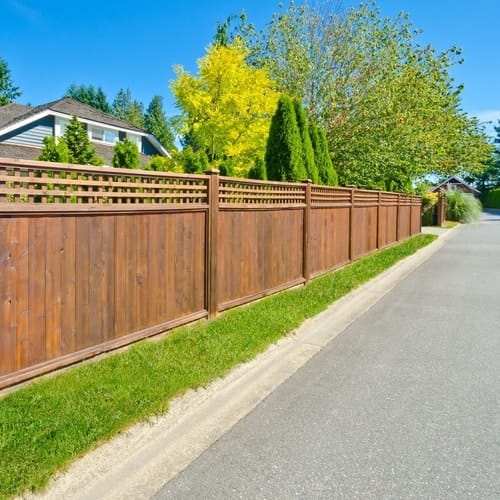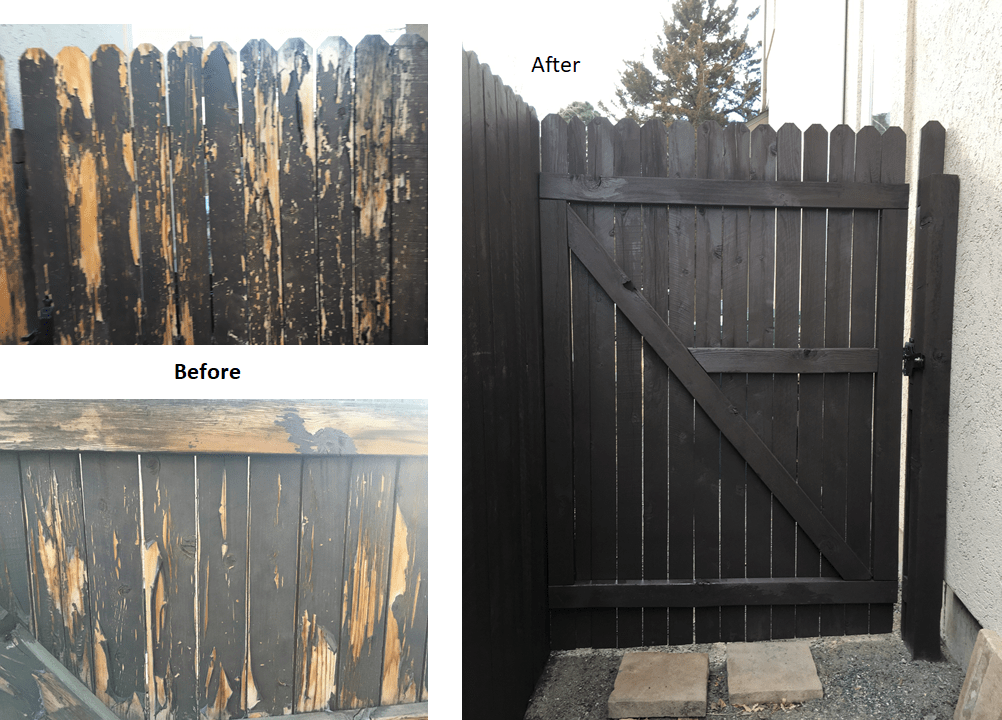Raise Your Exterior Room with Professional Fence Staining Services!
Raise Your Exterior Room with Professional Fence Staining Services!
Blog Article
Just How to Pick the Right Fence Stain for Your Building
When it comes to enhancing the look and toughness of your home's fencing, picking the right discolor is a critical choice that needs cautious consideration. Just how can you guarantee that you select the excellent fencing tarnish that straightens with your home's design and upkeep demands?
Comprehending Wood Kind
To pick the proper fence stain, it is vital to have a detailed understanding of the numerous sorts of timber typically utilized for secure fencing. The choice of wood plays a crucial function in determining the longevity and overall aesthetic appeals of the fencing. Cedar is a popular option because of its all-natural resistance to degeneration and pests, making it a durable choice for outdoor structures. Pine is another usual wood made use of in secure fencing, recognized for its price and simplicity of staining. Want is extra susceptible to bending and decomposing compared to cedar. Redwood is a premium option recognized for its striking appearance and natural longevity, though it features a higher price. When choosing a fencing tarnish, it is very important to think about the type of timber being used to guarantee compatibility and optimum protection. Understanding the attributes of different timber kinds will help you make an informed decision when it pertains to picking the best fence stain for your residential or commercial property - Fence Staining Nashville TN.
Choosing the Right Color
Choosing a proper color for your fencing tarnish is an important decision that considerably impacts the overall visual charm of your property. The shade you choose should enhance the design of your home, blend harmoniously with the surroundings, and show your individual taste. When choosing a shade, consider the existing shade scheme of your residential property. For an all-natural appearance, natural tones like browns, environment-friendlies, or grays work well. These shades can help the fencing blend into the landscape and create a natural appearance. If you favor a more modern or vibrant look, think about opting for darker tones like black or deep charcoal for a striking contrast. Lighter colors such as whites or light grays can make a fencing show up larger and include a touch of sophistication to your building. Ultimately, the right shade selection will enhance the beauty of your fence and elevate the overall aesthetic allure of your home.

Considering Transparency Degrees
When choosing the right color for your fencing discolor, another vital element to take into consideration is the degree of transparency that will best match your residential or commercial property's visual and upkeep demands. Openness levels in fencing spots usually fall right into 3 classifications: transparent, semi-transparent, and solid. Clear stains permit the natural beauty of the timber to show via while offering minimal defense against the elements. They are optimal for new or well-kept fencings where showcasing the wood grain is a priority. Semi-transparent stains offer an equilibrium in between shade improvement and protection, enabling some timber grain to be noticeable while supplying moderate protecting from UV rays and wetness. Strong stains, on the various other hand, give one of the most defense as they completely cover the wood with a nontransparent coating. These appropriate for older fencings or those in demand of considerable protection or shade modification. Take into consideration the degree of exposure your fence deals with, the wanted maintenance regularity, and the visual you want to attain when selecting the best transparency level for your fence discolor.
Examining Upkeep Needs
Considering the long life and maintenance of your fencing, examining the upkeep needs is crucial in figuring out the most suitable fence discolor for your property. The degree of upkeep required for your fence can differ relying on aspects such as the sort of wood, climate problems in your location, and your personal preferences.
When examining upkeep requirements, it is important to take into consideration the longevity of the fence tarnish. Some stains call for even more regular reapplication than others, so picking a discolor with a longer lifespan can assist minimize the overall maintenance demands of your fence (Fence Staining Service). In addition, factors such as resistance to UV rays, water, and mold can influence just how typically you need to re-stain your fence

Examining Examples Before Application
Before applying any kind of fence discolor, it is advisable to perform example examinations to ensure compatibility with the wood and preferred aesthetic result. Testing examples permits you to assess how the stain will certainly communicate with the particular type of Our site timber used in your fencing, as different woods can absorb stains in a different way. To start, select a small inconspicuous area of the fencing to use the stain samples.
Conclusion
In conclusion, selecting the appropriate fencing discolor for your home entails recognizing the wood kind, choosing the ideal color, thinking about openness degrees, evaluating upkeep needs, and screening samples prior to application (Fence Staining). By taking these variables into factor to consider, you can guarantee that your fence tarnish complements your building while providing the necessary defense and toughness. Make a notified decision to boost the appearance and durability of your fencing
Report this page